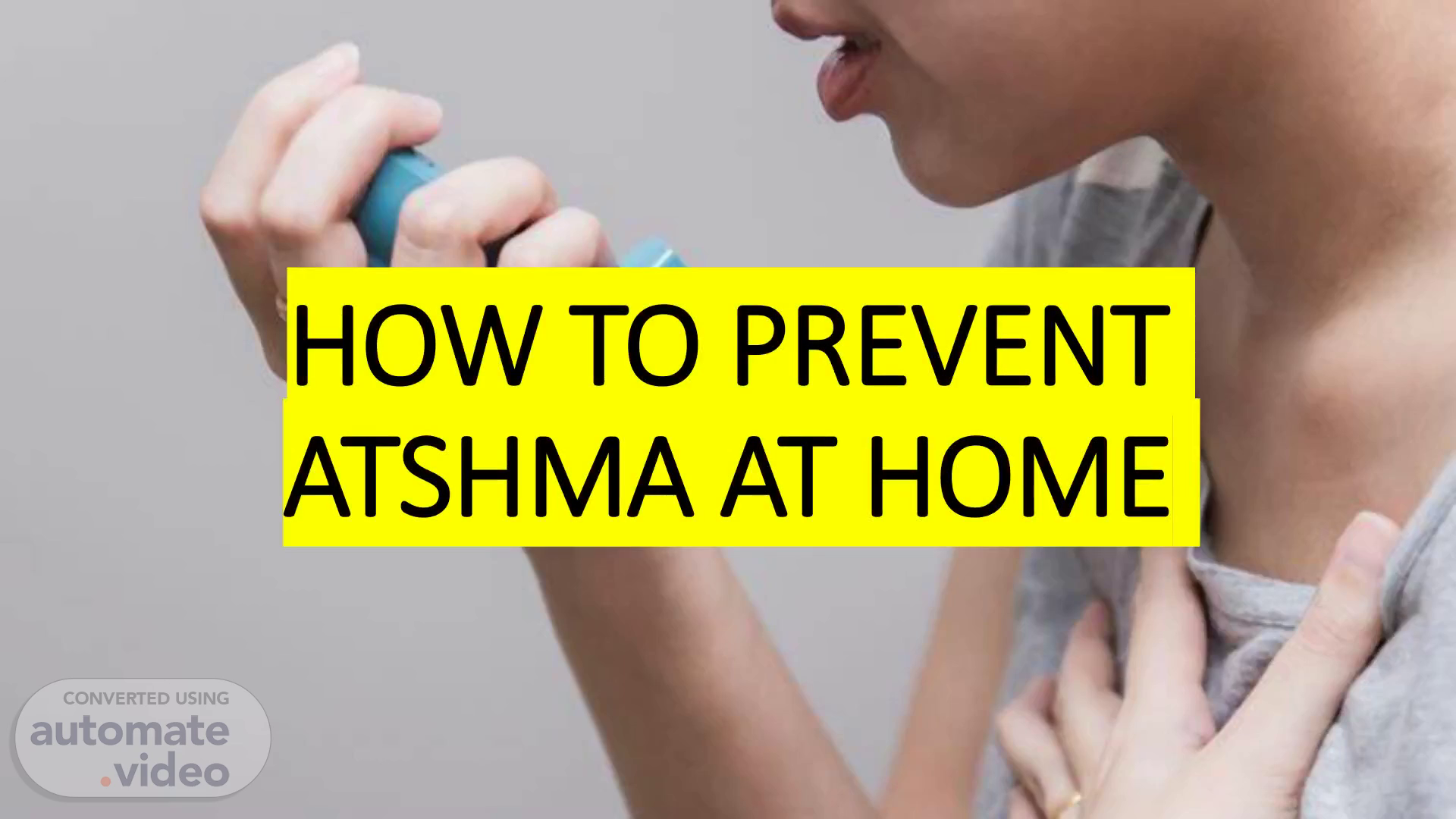
Page 1 (0s)
[Audio] HOW TO PREVENT ASTHMA AT HOME. . . HOW TO PREVENT ATSHMA AT HOME.
Page 2 (7s)
[Audio] What is Asthma? Asthma is a chronic inflammatory lung disease that can cause repeated episodes of cough, wheezing and breathing difficulty. During an acute asthma episode, the airway lining in the lungs becomes inflamed and swollen. In addition, mucus production occurs in the airway and muscles surrounding the airway spasm..
Page 3 (31s)
[Audio] What are the main causes of asthma?? 1. Airborne allergens, such as pollen, dust mites, mold spores, pet dander or particles of cockroach waste. 2. Respiratory infections, such as the common cold. 3. Physical activity. 4. Cold air. 5. Air pollutants and irritants, such as smoke..
Page 4 (1m 5s)
. . ASTHMA CAUSES PET DANGER SOME FOODS ANO BEVERAGES RESPIRATORY INFECTIONS GENETIC SMOKING STRESS CERTAIN MEDICATIONS DUST CHEMICALS AND PARFUMES AIR POLLUTANTS.
Page 5 (1m 12s)
[Audio] Asthma Symptoms • wheezing, coughing and chest tightness becoming severe and constant. • being too breathless to eat, speak or sleep. • breathing faster. • a fast heartbeat. • drowsiness, confusion, exhaustion or dizziness. • blue lips or fingers. • fainting..
Page 6 (1m 38s)
. Asthma ooe Symptoms tabored breathing Wheezing Sleep problems Chest pain Frequent coughing Allergies Commoncald Feeleng tired.
Page 7 (1m 44s)
[Audio] HOW TO PREVENT ASTHMA ATTACK AT HOME. . .
Page 8 (1m 51s)
[Audio] 1. Follow your asthma action plan. With your doctor and health care team, write a detailed plan for taking medications and managing an asthma attack. Then be sure to follow your plan. Asthma is an ongoing condition that needs regular monitoring and treatment. Taking control of your treatment can make you feel more in control of your life in general.
Page 9 (2m 18s)
[Audio] 2. Get vaccinated for influenza and pneumonia. Staying current with vaccinations can prevent flu and pneumonia from triggering asthma flare-ups. Identify and avoid asthma triggers. A number of outdoor allergens and irritants — ranging from pollen and mold to cold air and air pollution — can trigger asthma attacks. Find out what causes or worsens your asthma, and take steps to avoid those triggers..
Page 10 (2m 50s)
[Audio] 3. Monitor your breathing. You may learn to recognize warning signs of an impending attack, such as slight coughing, wheezing or shortness of breath. But because your lung function may decrease before you notice any signs or symptoms, regularly measure and record your peak airflow with a home peak flow meter.
Page 11 (3m 13s)
[Audio] 4. Identify and treat attacks early. If you act quickly, you're less likely to have a severe attack, you also won't need as much medication to control your symptoms. When your peak flow measurements decrease and alert you to an oncoming attack, take your medication as instructed..
Page 12 (3m 35s)
[Audio] 5. Take your medication as prescribed. Just because your asthma seems to be improving, don't change anything without first talking to your doctor. It's a good idea to bring your medications with you to each doctor visit, so your doctor can double-check that you're using your medications correctly and taking the right dose. 6. Pay attention to increasing quick-relief inhaler use. If you find yourself relying on your quick-relief inhaler, such as albuterol, your asthma isn't under control. See your doctor about adjusting your treatment.
Page 13 (4m 15s)
[Audio] HOPEFULLY THIS VIDEO CAN HELP YOU :) THANK YOU.